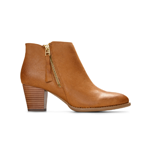
How Long Do Walking Shoes Really Last?

If you enjoy traveling, hiking, or simply taking long walks on the beach, you’ve probably found yourself looking into options for specialized performance footwear. And if you’re currently dealing with older soles, it’s helpful to know: how long do walking shoes last?
Though many people overlook it, the durability of a pair of walking shoes is paramount. After all, this type of footwear must be built with a high standard of quality to withstand the wear and tear that coincides with taking repeated strides over varying types of terrain.
Whether you’re looking for your very first pair of walking shoes or simply wondering how often to replace walking shoes that you own, read on. In this guide, we’ll dive deep into the topic of walking shoe lifespans and provide tips for how to get the most out of your favorite pair so that you can fully experience the vast benefits of walking.
Understanding the Lifespan of Walking Shoes
Many people never give the lifespan of their shoes much thought. Often, we just wear our footwear as we wish until it inevitably sustains one too many holes or creases. Then, we look for a new pair.
That said, when you’re securing your own pair of walking shoes, it’s important to be a bit more intentional. When compared to casual, everyday shoes, footwear designed for walking is typically:
- A bigger investment price-wise
- Crafted with specialized materials
For these reasons, it’s crucial to protect the integrity of walking shoes by treating them well. If you exercise a little additional caution to respect your shoes, they will stand the test of time more effectively and therefore be able to support you on more adventures.
To help your walking shoes enjoy as long of a lifespan as possible, let’s consider practical strategies to keep your shoes stronger for longer.
Factors That Affect Walking Shoe Durability
By choosing the right shoe with enhanced durability upfront, you can save yourself time and money later on what you’d otherwise spend searching for a replacement. And when you know how to properly care for the shoes you buy, you can take full advantage of all their great qualities.
Two of the biggest factors that have an impact on the durability of shoes are:
- Make and materials – We’ve all bought a flimsy pair of footwear on a whim and quickly regretted it. The problem is—when it comes to walking shoes, you get what you pay for. That’s why it’s crucial to trust shoes that have been expertly engineered with high-quality materials that won’t easily fall apart.
- Frequence of use – If you wore the same shirt everyday, you’d notice pretty quickly. Yet with our shoes, we rarely think about our frequent usage. It’s best to own more than one pair of walking shoes, as by alternating between the pairs, they last longer collectively.
Keep these elements in mind when buying and maintaining walking shoes to increase the longevity your footwear is able to provide.
Signs Your Walking Shoes Need Replacement
When you see warning signs that your walking shoes may be on their last leg, it’s best to take action to secure a replacement pair as soon as possible. So, what are those red flags?
If you’ve had a particular pair of walking shoes for a while and you want to check if they’re still viable, look for these symptoms that can signal significant wear and tear:
- Worn down tread pattern – The shoe outsole, or bottom section of your shoe, is crucial for providing the traction needed to navigate safely over terrain without slipping. Inspect your tread every now and then to see if the pattern has worn down to the point of being smooth.
- Extensive creasing – There’s that inevitable first crease you try to avoid when debuting a brand new pair of spotless shoes. These aren’t the creases to worry about. Rather, it’s those deep, obvious creases that impact the structural integrity of a shoe that should serve as a signal. When you see an abundance of these wrinkling up your footwear, it might be a sign that your shoe has seen better days from excessive wear.
- Uneven wear – If you place your shoe on a flat surface and it leans one way or the other, this can be a sign that you’ve worn down and weakened part of it. When the components of your shoe are worn out, they may not be able to appropriately align your feet nor absorb shock from the ground, which ultimately lends a hand to decreased arch support.
By paying attention to these telltale signs of damage, you can begin to intuitively notice when to replace walking shoes. Then, you can start comfortably searching for your next pair without feeling rushed by the realization that your beloved walking shoes are not meant for this world much longer.
Tips for Extending the Lifespan of Your Walking Shoes
While there’s no definitive answer to the question, “how long should walking shoes last?”, there are steps you can take to sustain your shoes for as long as possible and help them go the extra mile. Try out these strategies to get the most out of any pair of walking shoes you own:
- Store them in the right environment – If kept in the wrong conditions, the outsole, midsole, and upper materials of footwear can dry out and lose the ability to function properly.1 The last thing you want to do is accidentally wear out your shoes when you’re not even wearing them.
- Avoid exposure to moisture – It’s important to store your shoes in a clean, dry area. Additionally, be aware of the sweat that can accumulate in your shoes when you walk. Avoid keeping your shoes on after you’ve finished your activity. Instead, remove them and give them a chance to air out.
You can’t prevent routine wear and tear that all walking shoes are reasonably expected to undergo, but you can employ strategies to avoid damaging your footwear unnecessarily.
When to Invest in New Walking Shoes
A common topic considered within the walking community is the question of how often to replace walking shoes. While there’s no one-size-fits-all answer for when to say out with the old and in with the new, podiatry experts recommend replacing shoes once they have1:
- Been used for athletic activities for about a year
- Supported 300-500 miles of walking
A good rule of thumb to follow is that if you walk briskly 5 days out of each week for 30 minutes at a time, you’ll need to replace your pair of shoes every six months to a year.2
Though it can be tempting, it’s not a good idea to keep putting off the replacement of your worn out shoes. Yes, purchasing a new pair will require an upfront investment. But if you continue to wear footwear that’s defunct, you may increase your risk of developing health conditions or sustaining injuries that will end up costing a lot more in the long run.1 Keep in mind, healthy feet are heavily reliant on the quality of shoes you put them in.
Plus, who doesn’t love feeling that extra spring in their step only a fresh pair of shoes can provide? When you’re walking in old shoes, you can easily forget how enjoyable and easy the ideal walking experience is supposed to be.
Comparing Different Types of Walking Shoes
One of the most fun parts about taking up the hobby of walking is picking out your perfect pair of shoes. But that leads to the question of “what is a good walking shoe?”. As you progress on your fitness journey, you may sample different styles of shoes to find out which features matter most to you.
Within our own collection of advanced walking shoe solutions here at Vionic, we’ve engineered different models to suit the unique preferences of all types of walkers.
Here are two of our most popular shoes that are perfect for walking with style, safety, and superior support:
- 23Walk Classic Sneaker – Crafted with premium full-grain leather uppers featuring water repelling capabilities, these shoes are built to withstand the elements. A durable rubber outsole, thermoplastic heel counter, and removable molded EVA midsole round out the quality of this shoe’s construction. It’s flexible and breathable yet dependable and robust.
- Walk Strider Sneaker – Designed for performance walkers, this technical shoe provides the perfect balance of flexibility and stability. Made with high-quality materials such as leather, mesh, EVA, and rubber, this everyday shoe is both sleek and supremely comfortable. If anti-roll and lateral rigidity tech is important to you, these shoes could be your ideal match.
Many beginners who are brand new to the world of walking make the mistake of thinking that any casual sneaker is technically appropriate for walking. However, this is far from the truth. Browse our collection of performance and recovery shoes and experience the powerful difference of footwear crafted specifically with walkers in mind.
Enjoy Walking Shoes that Last Longer with Vionic
Walking is phenomenal for your physical and mental health. Want to know the best part about this low-impact activity? The only equipment you need to enjoy it is a good pair of walking shoes that offer the proper amount of arch support and shoe cushioning.
The footwear you lace on before heading out the door is the bread and butter of your walking experience, so keeping it in good shape is key. Trust advanced Vionic footwear solutions to stand the test of time and help you enjoy unmatched style and comfort with every step and for every mile.
Sources:
- Furman, Ayne. “How Do I Know When It Is Time To Replace My Athletic Shoes?” American Academy of Podiatric Sports Medicine. https://www.aapsm.org/replace_shoes.html
- Corliss, Julie. “Tips for choosing walking shoes.” Harvard Health Publishing. 1 May, 2022. https://www.health.harvard.edu/exercise-and-fitness/tips-for-choosing-walking-shoes









